Learning a New Language could help you Conquer your Next Race
 Karen Parnell
March 24, 2023
Karen Parnell
March 24, 2023
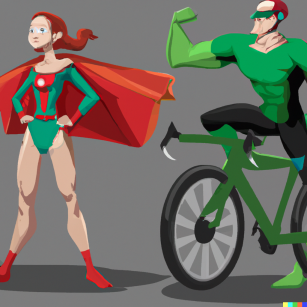
Learning a New Language could help you Conquer your Next Race
Our minds can change our bodies – you already know that.
But what does our body language have to do with resilience?
Dr. Amy Cuddy, Harvard Professor and fellow body-language reader, believes our bodies can change our minds.
After years of research, she concluded that positive body language can significantly improve your thoughts, feeling, attitudes, and actions, all contributing to a more resilient you.
Turns out our body language changes how we interact with the world and making slight changes to how we move can affect our bodies, minds and how we are perceived by others.
In particular, positive body language can help use fell more optimistic, perseverant, and resilient – which is useful when we are training and racing.
Positive Body Language Changes your Body
And when your strike a positive pose there are changes inside of you too.
Firstly, there’s a boost to your Testosterone:
Certain body language can raise your testosterone level by 20%, which can improve confidence and motivation.
Second, there’s less cortisol:
Cortisol is the stress hormone. And the more stressed you are the more cortisol you have.
On the flip side, having lower cortisol levels helps you think more clearly, especially in challenging or difficult situations – like a race start!
And together…
High testosterone and low cortisol work as a team to help you thrive under pressure, make decisions, and get stuff done – and have a confident, clear mind in the process.
Positive Body Language Changes your Mind
It boosts your emotional intelligence:
Showing more positive body language can help you be more aware of your emotions and control and express them better, too.
Plus, you will have an easier time picking up on how others are feeling. That’s because positive body language helps us be more present and engaged – and that encourages others to engage right back.
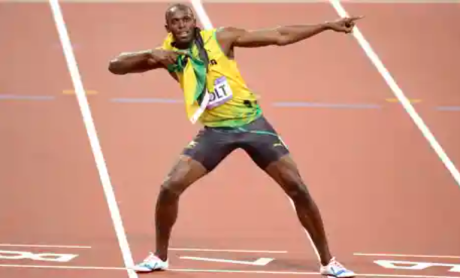
Usain Bolt celebrates in his trademark style after winning the men's 200m final at the London 2012 Olympic Games. Photograph: Rex Features
Positive Body Language Changes how you are Perceived by Others
It can make you more likable and trustworthy…
Researchers at Tufts University showed people soundless clips of doctors interacting with patients. Just by observing the interactions the clip watchers predicted which doctors were sued by their patients.
And even make you appear more competent…
Researchers over at Princeton University found that your kindergarten teacher was right:
Actions really do speak louder than words!
In a series of studies, researchers found that the “perceived competence” of political candidates running for senator or governor was more related to their body language than the platforms they were running on.
What’s more, people could accurately predict which candidates were elected based on a 1-second clip showing their stance.
I know what you are thinking:
What exactly is this super-powerful positive body language anyway?
Can it help with my training and races?
And can you teach me?
Yes – read on.
Tip #1: Make Eye Contact
Making eye contact is one of the easiest ways to show others you are confident – and to pick up on the confidence people have in you.
This can be handy at a race start to help you feel and look more confident.
So, turn your everyday into a staring contest. (But try not to make it weird).
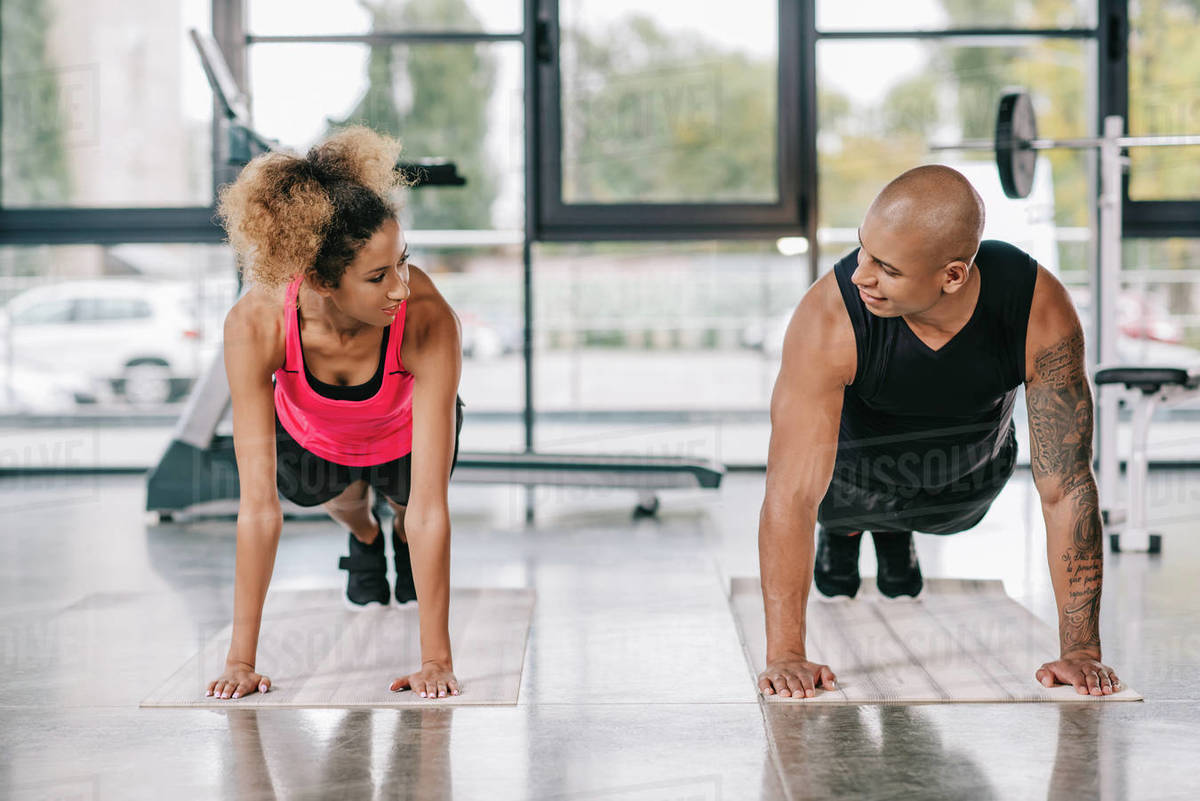
Tip #2: Smile
Smiling even if you aren’t feeling happy to begin with, can help you feel happy. When you smile, your body releases dopamine and serotonin – “feel good” neurotransmitters.
Two University of Kansas psychologists believed in smiling too. They asked study participants to smile, then made them do lots of stressful tasks.
It turns out the smilers performed better.
Plus, they felt more clam, cool and collected than their neutral counterparts.
The smilers even maintained a constant heart rate.
That sounds useful at the race start and all the way through your race – so remember to smile all the way round and not just for the photographers!
When a volunteer or spectator says a kind word to you on the course give them a beaming smile to make them and your feel good.
Now that something to smile about!
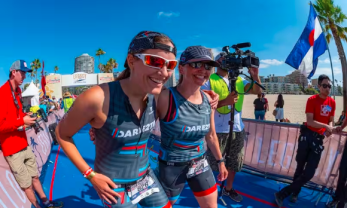
Tip #3: Stand Strong
Place your feet shoulder width apart and plant them firmly on the ground.
Dr. Lillian Glass, a behavioural analyst and body language expert, tells us that when we stand strong – just like this – we appear more confident to others.
Or as we like to say, fake it till you make it. Because your mind is listening to your body.
Stand strong at your race start and tell your body you are ready and confident.

Tip #4: Perfect your Posture
Chest out, Head high.
Taking on a strong, confident posture makes you feel just that.
This is doubly useful on the run section – chest out, head high – especially when you feel yourself fatiguing and losing form.
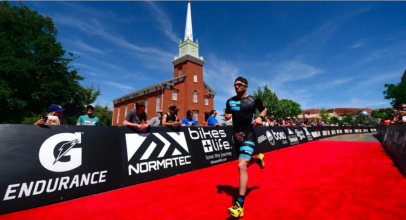
Tip #5: Strike a Power Pose
Let’s try an experiment.
First stand up.
Then, put your left hand on your left hip.
Now, put your right hand on your right hip.
Lastly, puff up your chest and take up space. All of it. The more the better.
Conclusion: You are now in a Power Pose.
While there’s more research being done on the subject some studies suggest that the simple act of striking a power pose can improve your confidence and increase your self-efficacy.
You know your belief that you can achieve a certain task. Like completing that triathlon ahead of you.
To reap the benefits, all you need to do is hold the pose for a couple of minutes. That’s it.
Simple right? And you look cool too.
Try striking a Power Pose for a couple of minutes before your race and boost your believe that you can PB the race ahead!
Remember learning a new language takes time – even body language – so practice the tips above from now.
Now make a plan for tomorrow to practice a few aspects of the positive body language – who knows you may even get that pay rise you wanted at work!
Karen Parnell is a Level 3 British Triathlon and IRONMAN Certified Coach, 8020 Endurance Certified Coach, WOWSA Level 3 open water swimming coach and NASM Personal Trainer and Sports Technology Writer.
Karen is currently studying for an MSc in Sports Performance Coaching at the University of Stirling.
Need a training plan? I have plans on TrainingPeaks and FinalSurge:
I also coach a very small number of athletes one to one for all triathlon and multi-sport distances, open water swimming events and running races, email me for details and availability. Karen.parnell@chilitri.com
Get your FREE Guide to Running Speed and Technique
Get your FREE Swim Workouts for Triathletes E-book
Get your FREE Open Water Swimming Sessions E-Book
FAQ: Body Language for Triathletes, Swimmers and Runners
What is body language, and why is it important in triathlons, running, and swimming?
Body language refers to the non-verbal cues and signals that we use to communicate our thoughts, feelings, and intentions. In triathlons, running, and swimming, body language is important as it can impact performance, technique, and mental focus. It includes facial expressions, posture, gestures, eye contact, and other physical movements that can convey confidence, determination, or fatigue.
How does body language affect performance in triathlons, running, and swimming?
Body language plays a significant role in the performance of triathletes, runners, and swimmers. Positive and confident body language can enhance performance by boosting self-belief and motivation, leading to improved focus, technique, and endurance. Conversely, negative body language, such as slouched shoulders or a discouraged facial expression, can contribute to a decrease in performance by signalling low confidence and affecting the athlete's mental and physical state.
Can body language influence the perception of opponents or race officials in these sports?
Yes, body language can influence how opponents or race officials perceive triathletes, runners, and swimmers. Confident and determined body language can create the impression of strength and competence, potentially intimidating opponents and influencing race officials' decisions. However, it's crucial to maintain sportsmanship and fair play while using body language to create a positive impression.
How can triathletes, runners, and swimmers improve their body language?
- Athletes in these sports can improve their body language through awareness, practice, and adopting specific techniques:
- Posture: Maintain an upright and aligned posture to optimize breathing, streamline movement, and convey confidence.
- Facial expressions: Use focused and composed facial expressions to demonstrate mental concentration and determination.
- Eye contact: Establish strong eye contact with fellow competitors, coaches, and race officials to display engagement and attentiveness.
- Gestures and movements: Utilize purposeful and efficient movements that showcase control, fluidity, and confidence in their respective sport.
- Relaxation techniques: Incorporate relaxation techniques, such as deep breathing and progressive muscle relaxation, to manage pre-race nerves and maintain a calm demeanour.
How can body language improve teamwork and communication among triathletes, runners, and swimmers?
Body language plays a vital role in enhancing teamwork and communication among triathletes, runners, and swimmers. Clear and assertive body language can effectively convey messages and emotions without relying solely on verbal communication. For example, making eye contact with a teammate or competitor can signal cooperation or indicate a strategic move. Open and approachable body language can foster positive interactions and collaboration, leading to better teamwork and support within the sport.
Are there any cultural considerations when it comes to body language in these sports?
Yes, cultural differences should be considered when interpreting and using body language in these sports. Gestures, facial expressions, and personal space can have varying meanings across different cultures. Athletes should be mindful and respectful of cultural norms and practices when communicating through body language, particularly in international or diverse competitions.
Can body language training be beneficial for triathletes, runners, and swimmers?
Yes, body language training can be highly beneficial for triathletes, runners, and swimmers. By improving their body language, athletes can enhance their confidence, mental resilience, and overall performance. Effective body language can also contribute to better communication, collaboration, and interaction with coaches, fellow athletes, and race officials.
Remember, while body language is an important aspect of sports performance, it should be complemented by proper training, technique development, and mental preparation for optimal results in triathlons, running, and swimming.
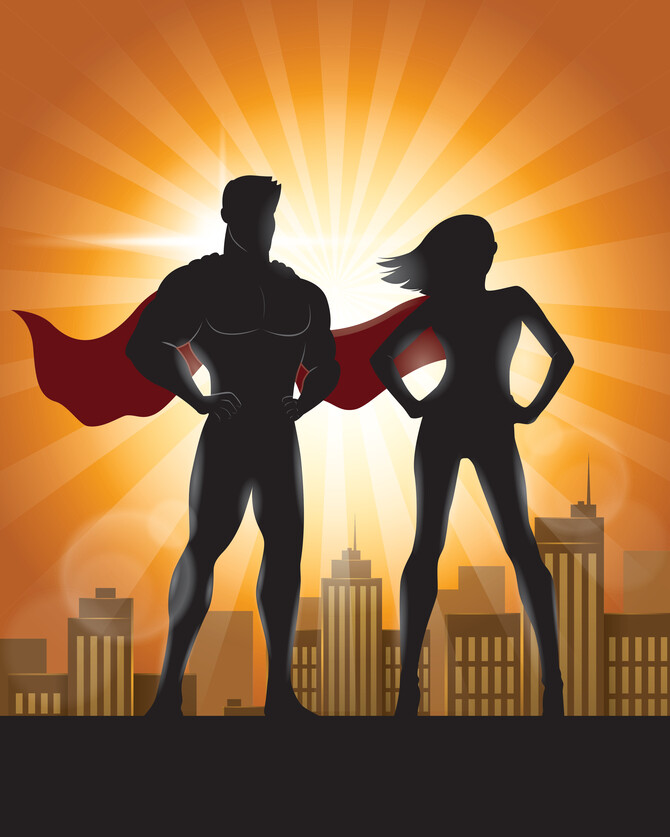
Triathlon Super Hero Power Pose
References
(PDF) Body Language in Sport (researchgate.net)
Body Language in Sport - Handbook of Sport Psychology - Wiley Online Library
Body Language in Sports | Science of People
#triathlon #triathlonraceprep #ironman #triathlontraining #bodylanguage #traithlontrainingplans #runningtrainingplans #swimmingtrainingplans
